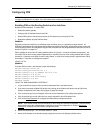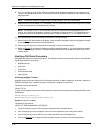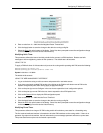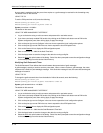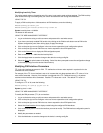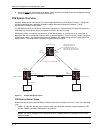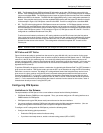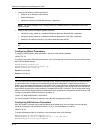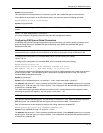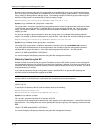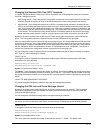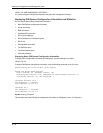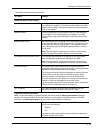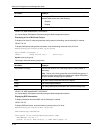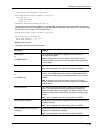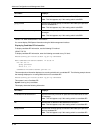
Configuring IP Multicast Protocols
Syntax: [no] ip pim-sparse
The commands in this example add an IP interface to port 2/2, then enable PIM Sparse on the interface.
If the interface is on the border of the PIM Sparse domain, you also must enter the following command:
HP9300(config-if-2/2)# ip pim border
Syntax: [no] ip pim border
NOTE: You cannot configure an HP routing interface as a PMBR interface for PIM Sparse in the current software
release.
USING THE WEB MANAGEMENT INTERFACE
You cannot configure PIM Sparse parameters using the Web management interface.
Configuring PIM Sparse Global Parameters
In addition to the global and interface parameters in the sections above, you need to identify an interface on at
least one routing switch as a candidate PIM Sparse Bootstrap router (BSR) and candidate PIM Sparse
Rendezvous Point (RP).
NOTE: It is possible to configure the routing switch as only a candidate BSR or RP, but Hewlett-Packard
recommends that you configure the same interface on the same routing switch as both a BSR and an RP.
To configure the routing switch as a candidate BSR and RP, use the following CLI method.
USING THE CLI
To configure the routing switch as a candidate BSR, enter commands such as the following:
HP9300(config)# router pim
HP9300(config-pim-router)# bsr-candidate ethernet 2/2 30 255
BSR address: 207.95.7.1, hash mask length: 30, priority: 255
This command configures the PIM Sparse interface on port 2/2 as a BSR candidate, with a hash mask length of
30 and a priority of 255. The information shown in italics above is displayed by the CLI after you enter the
candidate BSR configuration command.
Syntax: [no] router pim
Syntax: [no] bsr-candidate ethernet | ve <portnum> | <num> <hash-mask-length> [<priority>]
The ethernet | ve <portnum> | <num> parameter specifies the interface. Enter ethernet <portnum> for a physical
interface (port). Enter ve <num> for a virtual interface. The routing switch will advertise the specified interface’s
IP address as a candidate BSR.
The <hash-mask-length> parameter specifies the number of bits in a group address that are significant when
calculating the group-to-RP mapping. You can specify a value from 1 – 32.
NOTE: Hewlett-Packard recommends you specify 30 for IP version 4 (IPv4) networks.
The <priority> specifies the BSR priority. You can specify a value from 0 – 255. When the election process for
BSR takes place, the candidate BSR with the highest priority becomes the BSR. The default is 0.
Enter a command such as the following to configure the routing switch as a candidate RP:
HP9300(config-pim-router)# rp-candidate ethernet 2/2
Syntax: [no] rp-candidate ethernet | ve <portnum> | <num>
The ethernet | ve <portnum> | <num> parameter specifies the interface. Enter ethernet <portnum> for a physical
interface (port). Enter ve <num> for a virtual interface. The routing switch will advertise the specified interface’s
IP address as a candidate RP.
9 - 15



